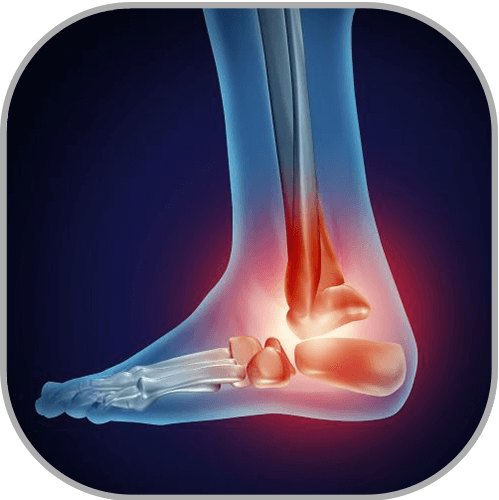At Towson Orthopaedic Associates, we believe conservative, non-surgical options should always be considered before moving forward with joint replacement surgery. For ankle arthritis or other degenerative conditions, we typically recommend starting with non-invasive treatments such as physical therapy, stretching, activity modification, prescription medication, and supportive bracing or orthotics tailored to your specific needs. These steps may help relieve pain and improve mobility without the need for surgery. If, after exhausting these measures, your symptoms persist, we may recommend total ankle replacement surgery to restore function and reduce pain. This procedure replaces the damaged joint surfaces with advanced metal and polyethylene (plastic) components designed to preserve ankle motion.
Ankle Replacement Surgery
Total ankle replacement may be recommended over ankle fusion in certain cases, as fusion eliminates joint movement while replacement maintains motion. For patients with advanced arthritis, significant cartilage loss, or deformity, the damaged portions of the tibia and talus are removed and replaced with a prosthetic joint made of metal and polyethylene. Preserving ankle motion can help reduce stress on surrounding joints and allow for a more natural walking pattern.
Ankle Replacement Recovery
Our fellowship-trained orthopaedic foot and ankle surgeons utilize advanced surgical techniques, including minimally invasive approaches when appropriate, to help optimize outcomes. Ankle replacement is typically performed as an inpatient or short-stay procedure, with many patients able to return home within one to two days. Postoperative care includes a structured rehabilitation program to protect the implant while restoring strength, flexibility, and gait mechanics. We also employ state-of-the-art pain management strategies to improve comfort and promote faster recovery. While healing times vary, most patients transition from a protective boot to regular footwear over several weeks to months, with gradual return to normal activities.
For more information about our joint replacement techniques and treatments, or if you would like to schedule a consultation with one of our orthopedic specialists, please contact our office today.


